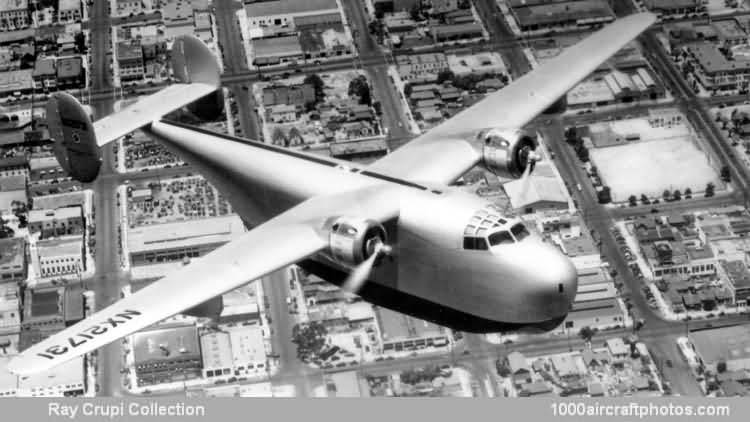In general, the wing comprised a narrow-chord, high-aspect-ratio planform utilizing a relatively thick airfoil section at the center of pressure. Davis claimed that his design would generate lift at very low angles of attack and thereby eliminate much of the induced drag of the wing.
A series of wind tunnel tests (financed by Consolidated) conducted afterward at Cal Tech exceeded even the most optimistic expectations, demonstrating that the Davis wing produced greater aerodynamic efficiency that any wing yet tested.
In 1938, with the aim of producing an experimental demonstrator that could potentially be offered to the commercial market, Fleet authorized Laddon to proceed with a new flying boat design that would integrate the Davis wing with a hull similar in configuration to that of the PB2Y. The structure utilized the advanced technique of flush-riveting the aluminum skins to the metal frame work of the wings and fuselage. Moveable control surfaces were of fabric covered metal construction.
To accommodate the narrow chord of the wings, the floats were made to fold inward against the wing undersurfaces. The engines selected was the experimental 2,300-hp Wright R-3350-8 Double Cyclone eighteen-cylinder, two-row air-cooled radial engines driving three-bladed, constant-speed metal propellers. These were the most powerful American-made aircraft engines in existence but had yet to be tested on a flying aircraft.
Though not built to a military specification, the decision to adopt a twin-engine (instead of a four-engine) layout was undoubtedly influenced by the Navy's Bureau of Aeronautics (BuAer) recent procurement of the Martin PBM. The shape and arrangement of the Model 31's twin fin tail group benefited from Consolidated's previous experience with the PB2Y, and together with the Davis wing, would be seen again in the design of the Model 32 (XB-24).
Soon after making its first flight on May 5, 1939 under civil registration number NX21731, the 52-passenger commercial transport Model 31 established itself as the fastest flying boat in the world, and was also the first aircraft to fly with R-3350 engines.
After no commercial orders for the Model 31 materialized, Consolidated embarked upon it campaign to sell the Navy a military variant that would be revised to a ten-seat patrol-bomber specification. Although BuAer evinced no interest in the project at the start, Consolidated nonetheless continued the test program at its own expense.
Revisions to the prototype during almost two years of testing included raising the empennage to accommodate a tail turret, adding a cuff that widened the planing surfaces of the forward hull, and installation of dummy gun turrets.
In April 1942, the Navy finally purchased the sole Model 31 under the designation XP4Y-1 (the factory name Corregidor was assigned but never officially adopted), and soon afterward, ordered the type placed into production as the P4Y-1 at a new plant to be established in New Orleans, Louisiana.
Intended armament consisted of one 1.46 in (37 mm) cannon in a nose turret, two 0.50 in (12.7 mm) machine guns in a powered dorsal turret, two 0.50 in (12.7 mm) machine guns in a powered tail turret, plus up to 4,000 lb (1,814 kg) of bombs, depth charges, and/or torpedoes carried externally.
In mid-1943, before the P4Y-1 assembly line had been tooled-up, production was cancelled due to the fact that all R-3350 engines were being allocated to the B-29 program for an indefinite time. The New Orleans plant was instead used to open a second assembly line of PBYs."
Span: 110 ft 0 in (33.53 m)
Length: 74 ft 1 in (2.58 m)
Wing area: 1,048 sq.ft (97.36 sq.m)
Weight empty: 29,334 lb (13,306 kg)
Loaded weight: 46,000 lb (20,865 kg)
Max speed: 247 mph (397 kmh)
Cruise speed: 136 mph (219 kmh)
Service ceiling: 21,400 ft (6,523 m)
Range: 2.300 mls (3,701 km)
